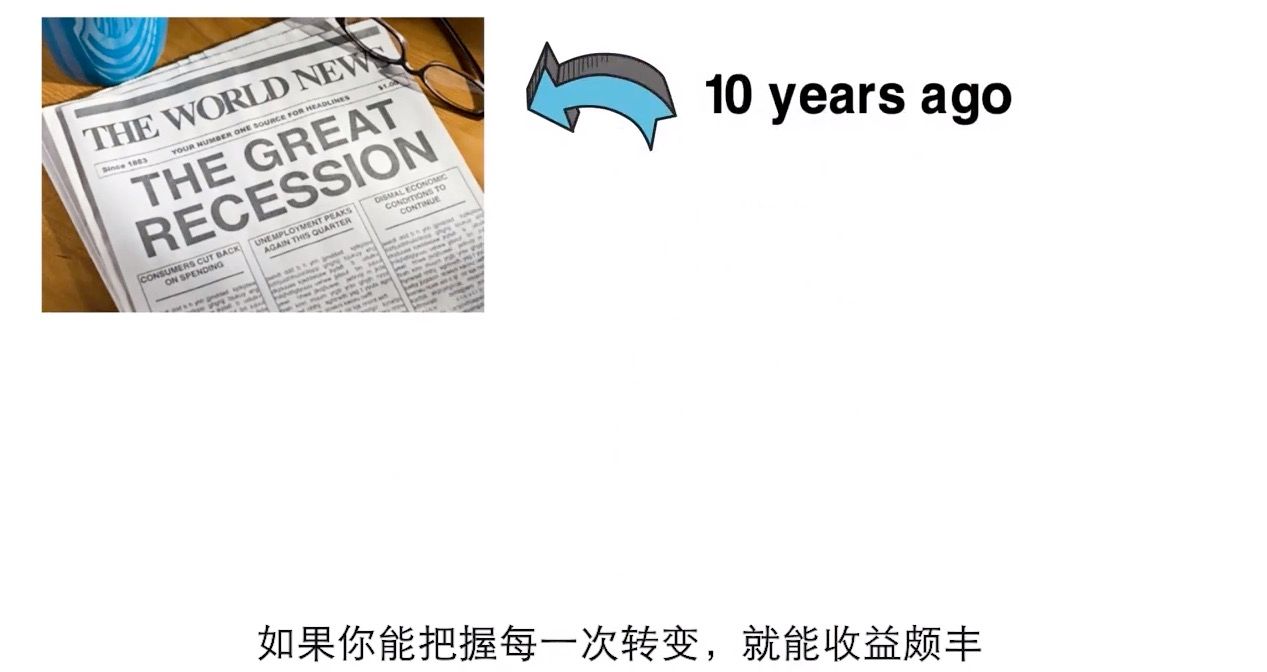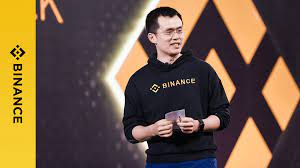Bridge Water Fund Ray Dalio talks about paradigm shift: Will gold or bitcoin be bought in the next decade?
Video source: Crypto Gurus, originally compiled by Cobo Wallet.
Ray Dalio, the legendary fund manager and one of the world's greatest investors, recently wrote an article in which the investor should focus on the future rather than the past when making investment decisions.
This will lead to the theme of this article – paradigm shift
Every 10 years, the world will change dramatically. If you can grasp every change, you will be able to make a lot of money. As Dalio said, recognize the paradigm you are in, see if it is not sustainable, and imagine how this paradigm shift will occur when this unsustainable end is over.
- Research: XRP, ETH, and other altcoins have a large deviation from Metcalfe's law
- The exchange is frequently stolen, and where is the security of digital currency going?
- Monroe (XMR) lock transfer attack details analysis

There are always huge unsustainable forces driving this paradigm, for example, there are many periods of low interest rates in history:
Low interest rates mean that borrowing money is cheap, when companies can lend to investment companies. This paradigm/period is characterized by investment growth and a booming economy. But this situation will not last forever, because physical lending and the purchase of these assets will exhaust the ability to borrow, the debtor will be squeezed, and credit problems will arise, which will lead to a fall in asset prices and a slowdown in economic development. One of the biggest mistakes as an investor is to assume that the paradigm never ends.
The 2008-2009 financial crisis was the most recent major paradigm shift that brought a major recession to the economy, and many investors were trapped in the quagmire. why? Because the economy prospered in the early years of this crisis, many people mistakenly believe that this will last forever.
Looking back at history, we can see that this kind of error has happened again and again.
Interestingly, a paradigm usually lasts for about ten years, and when each decade is nearing its end, there is usually a huge economic fluctuation. In 2019, the current paradigm may come to an end. What will be ushered in the next decade?
To answer this question, we must first consider the main drivers of the current paradigm since 2009:
The first is low interest rates;
The second is quantitative easing.
Let's first look at low interest rates – interest rates mean the cost of borrowing money from individuals and companies. If a company borrows £1 million at a 1% interest rate, it is expected to pay £10,000 in interest after one year; if the interest is 10%, then it will pay interest of £100,000; if the interest rate falls from 10% to 1%, The company saved £90,000 and they will have more money to grow their business. When companies can borrow money cheaper (that is, when interest rates are low), they will stimulate economic development; therefore, when the economy is depressed, the government will generally lower interest rates, and lowering the threshold for loans will promote economic development. In 2009, the global economy showed a strong downward trend, and governments in various countries have lowered interest rates to cope.
Second: quantitative easing policy
Quantitative easing is another good point of printing money. Obviously, printing money will not give people more confidence. In the quantitative easing policy, the central bank usually prints more money out of thin air and then uses the money to buy assets, especially bonds issued by the government. This situation has two main effects: First, the price of government bonds rises because of the increase in demand, while the price increase makes government bonds less attractive to investors. Second, companies have more Money to spend.
When they think about where to invest their money, they may choose government bonds because it is usually the safest investment, but because bond prices rise too much, they may look for high-risk, high-return investment products. As a result, economic stimulus has further increased, and global interest rates have fallen to levels that cannot be lowered. In fact, some countries, such as Switzerland, Denmark and Japan, have already experienced negative interest rates.
As in the previous example, if a company borrows £1 million at a 1% interest rate, the company will pay £10,000 in interest a year later. But if the interest rate is -1%, borrowing £1 million for one year, the borrower needs to pay the lender a £10,000 interest. Yes, it means spending money to let others borrow money.
If we have a time machine, back to 20 years ago, telling an economist that negative interest rates will actually happen, he may laugh at you. Because this is very unsustainable.
So, is quantitative easing?
Since 2009, quantitative easing or a large amount of money has played a very powerful stimulus. However, as time progressed, its effect gradually weakened. Moreover, the quantitative tightening after the quantitative easing policy has also caused the market to “shrink the panic”.
What will happen next?
Monetary policy is generally exchanged between the two modes. In one case, borrowers are helped to borrow money at a lower cost through low interest rates; in another case, lenders are encouraged by raising interest rates to increase loan costs. By observing which party the central bank wants to help and what measures they will take, we can see where the next paradigm will go.
According to Ray Dalio, it is clear that in a normal economic environment, the central bank will prefer to help borrowers, which means lowering interest rates and increasing quantitative easing. However, the effects of both methods are gradually weakening.
Is there any other way?
Dalio believes that debt monetization and currency depreciation will gradually accelerate, which will reduce the true value of the currency and the return of the lender.
This is also a test of the patience of lenders, in the case of this actual negative interest rate, how long they can continue to choose other assets.
Put another way, by reducing the value of the French currency, the attractiveness of the loan is getting smaller and smaller. Investors will seek higher-risk investments that stimulate economic development. As risks and conflicts increase, the safety factor of savings methods such as cash and bonds decreases.
So, which investment method is better?
Dalio believes that the investments that are most likely to perform the best will be those that perform well in currency depreciation, domestic and international conflicts, such as gold.
For this reason, Dalio believes that considering adding gold to the portfolio can both reduce risk and increase returns. The conclusion of his paradigm shift is that most traditional investments, such as stocks, bonds, savings cash, future It is very likely that the income will be poor in a few years. Instead, he emphasizes that gold is an asset that has long been seen as a hedge against traditional markets, and that hedge against traditional markets means the opposite of traditional markets.
Let's review the last big economic crisis:
An important indicator of the US stock market, the S&P 500 index has nearly halved since 2007, and it did not bottom out until 2009. At the same time, the value of gold is stable and has brought positive returns to investors. With the advent of decentralization technology, cryptocurrencies such as Bitcoin have entered the public eye.
Due to the decentralized design and limited supply, Bitcoin is not affected by zf and is not available through printing, so it is considered by many to be able to hedge digital gold in traditional markets. Although Dalio does not directly mention Bitcoin in the text, he has emphasized market hedging. Like many of you, I believe Bitcoin is gradually shifting to hedging assets (bullish!).
But I also want to remind Bitcoin holders, including myself:
Although some people think that Bitcoin can be a hedge against traditional financial markets like gold, it is a new asset after all, and has not yet been recognized by the public. Many people still regard it as a speculative product. Too much investment in assets may put you at great risk.
Although the Bitcoin community firmly believes that Bitcoin is a new gold, it is not necessary to choose between the two (buy bitcoin), but in fact, gold is widely recognized around the world, and Bitcoin is still new, and more A reasonable suggestion is that investors will configure both into their own portfolios.
We will continue to update Blocking; if you have any questions or suggestions, please contact us!
Was this article helpful?
93 out of 132 found this helpful
Related articles
- The world’s top 15 investment institutions are gambling cryptocurrencies, and these years of investment are more lively.
- We analyzed 32 halvings of 24 cryptocurrencies, telling you how bitcoin halving the price
- Vitalik: How to distinguish between side chains, Plasma and shards?
- Bitcoin ETF is far away? SEC again postpones decision on three applications
- Securities Times: Digital currency is ready to go, are you ready?
- Goldman Sachs: Bitcoin will hit a new high in 2019, and these callbacks should be seen as buying opportunities on dips
- China’s central bank’s digital currency and Libra may not directly confront each other, but they all impact payment institutions.





